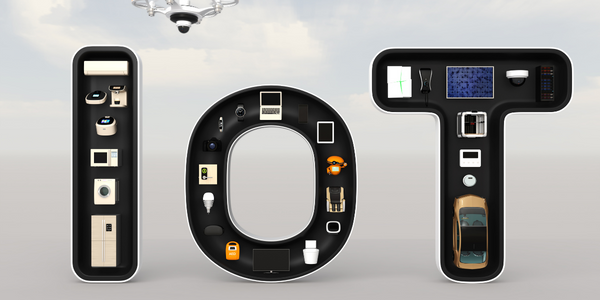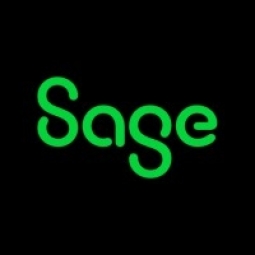Customer Company Size
SME
Region
- America
Country
- United States
Product
- Sage 500 ERP
Tech Stack
- Windows-based client/server architecture
- SQL database
Implementation Scale
- Enterprise-wide Deployment
Impact Metrics
- Cost Savings
- Productivity Improvements
Technology Category
- Functional Applications - Enterprise Resource Planning Systems (ERP)
Applicable Functions
- Business Operation
Use Cases
- Cybersecurity
- Remote Collaboration
Services
- System Integration
About The Customer
United Way of Metropolitan Dallas (UWMD) is a nonprofit organization based in Dallas, Texas. It is one of the top 15 United Way chapters in the nation in terms of size. The organization raises money for health and human services in a three-county area. The funds raised are distributed to organizations as diverse as daycare centers, vocational training, the Boy Scouts and the Girl Scouts, emergency shelters for battered women and children, medical and dental treatment for the underprivileged, and programs for the blind and disabled. The administration costs of UWMD are just 9 percent of the total funds collected, well within the Better Business Bureau guidelines for nonprofits. With over 80 employees and revenues exceeding $50 million, the organization operates much like a midsized company.
The Challenge
United Way of Metropolitan Dallas (UWMD) is a nonprofit organization that raises and distributes charitable contributions for a diverse range of organizations. With revenues topping $50 million, the organization rivals many midsized companies in complexity. It not only funnels donations to local nonprofits, but it also has a capital fund, conducts campaigns for several other counties and government employee groups, runs a foundation to offset administrative costs, collects funds for various national campaigns, and distributes designated donations to target groups. Each activity has its own books and operates much like a separate company. The organization was in need of an advanced business system that could manage these complex operational challenges while providing a healthy return on investment. The new system would have to bring a hefty return on investment in improved efficiencies to justify the purchase price.
The Solution
UWMD implemented Sage 500 ERP to manage all of its accounts payable and other general ledger functions. The system cuts checks to scores of external vendors involved in campaigns, tracks pledge fulfillments, and ensures that member agencies receive promised funds on time. A customized application developed by the reseller provides managers with the ability to electronically approve checks before issuing. The organization also uses the system to streamline its internet pledging and reporting. Donors can pledge online through the organization’s website and secure socket connection. Agencies tasked with reporting to UWMD on a quarterly basis can do so using a specialized application over the Internet, saving a lot of paperwork for time-strapped agencies.
Operational Impact
Quantitative Benefit

Case Study missing?
Start adding your own!
Register with your work email and create a new case study profile for your business.
Related Case Studies.

Case Study
Premium Appliance Producer Innovates with Internet of Everything
Sub-Zero faced the largest product launch in the company’s history:It wanted to launch 60 new products as scheduled while simultaneously opening a new “greenfield” production facility, yet still adhering to stringent quality requirements and manage issues from new supply-chain partners. A the same time, it wanted to increase staff productivity time and collaboration while reducing travel and costs.

Case Study
Aerospace & Defense Case Study Airbus
For the development of its new wide-body aircraft, Airbus needed to ensure quality and consistency across all internal and external stakeholders. Airbus had many challenges including a very aggressive development schedule and the need to ramp up production quickly to satisfy their delivery commitments. The lack of communication extended design time and introduced errors that drove up costs.

Case Study
Enel Secures Italian Power Generation Network
Electric energy operators around the world are working to increase the reliability and cyber resiliency of their systems. This includes Enel, a global power company that manages and monitors the Italian power grid. This grid:• Serves 31 million customers• Has a net installed energy capacity exceeding 31 gigawatts• Includes more than 500 power generation plants,including hydroelectric, thermoelectric, and wind• Is managed and monitored by Enel 24/7/365• Is operated by Terna, the Italian Transmission System Operator (TSO)Enel is responsible for the availability of the grid’s underlying ICS and industrial network. It also manages Regional Control Centers and Interconnection Centers which connect with the TSO. The TSO manages the flow of energy to the grid plus controls and remotely regulates the power generation of power plants, increasing and decreasing power production as required. The complex system of interaction and cooperation between Enel and the TSO has strong security implications as well as operational and business challenges.

Case Study
Porsche Announces Augmented Reality at Scale, Powered by Atheer
The usual practice for car repairs at a Porsche car dealership is to have a factory representative or regional engineer visit to help diagnose the problem, and sometimes a faulty assembly is shipped back to company HQ for damage analysis. All that costs time and money for customers and dealers alike.

Case Study
Securing the Connected Car Ecosystem
In-vehicle communications and entertainment system hosts high-value or sensitive applications. API libraries facilitate communication and sharing of vehicle data. These API libraries are vulnerable to reverse engineering and tampering attacks and may even result in loss of passenger safety. Attackers can inject malware that may be able to migrate to other in-car networks such as the controller-area-network (CAN) bus which links to the vehicle’s critical systems. Software provided for dealers to interface with cars through the OBD2 port is vulnerable to reverse engineering and tampering attacks. Hackers may be able to abuse these tools to inject malicious code into the ECUs and CAN bus. Attackers can lift the cryptographic keys used, and use that to build their own rogue apps/software. Their cloned version of the original app/software may have altered functionality, and may intend to gain access to other in-car networks.

Case Study
Covisint Improves Mitsubishi's Collaboration With Its Supply Chain
Mitsubishi sought to improve supplier relationships on a global basis and to offer an easy-to-use solution to interact with them. In August 2004, Mitsubishi selected Covisint’s platform to help improve sharing of information and collaborative business processes with its global suppliers. Covisint enabled Mitsubishi to provide its suppliers with immediate access to information and applications to obtain more collaborative working relationships







